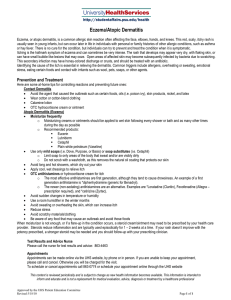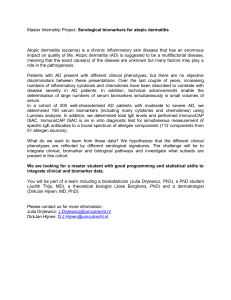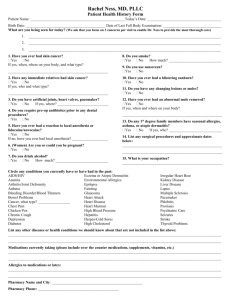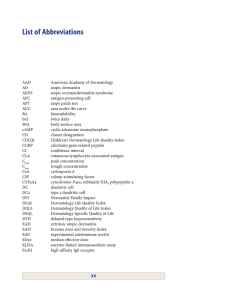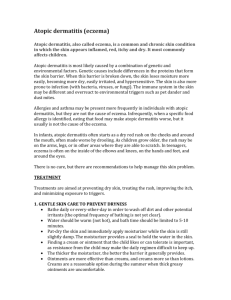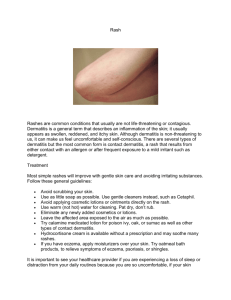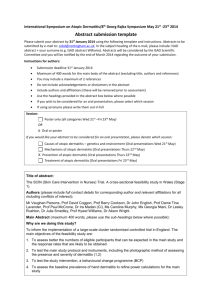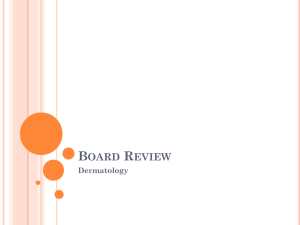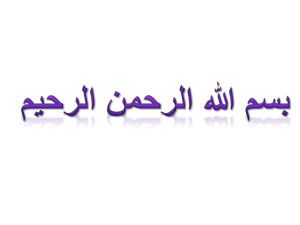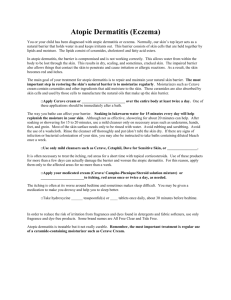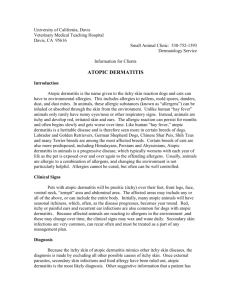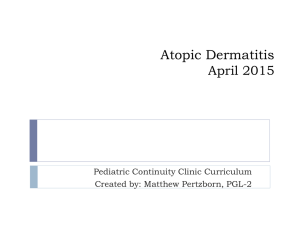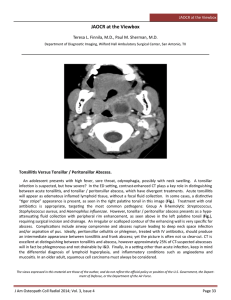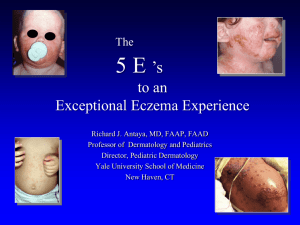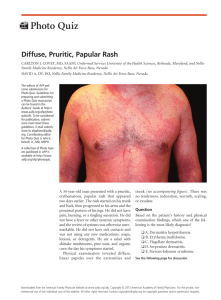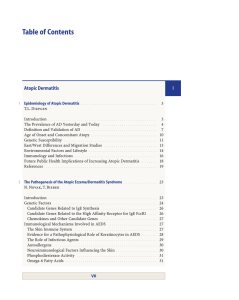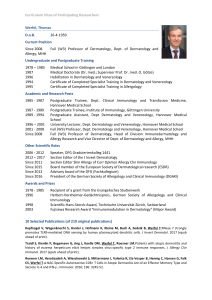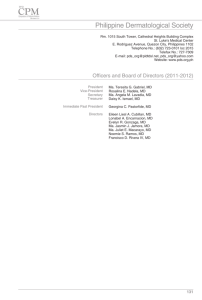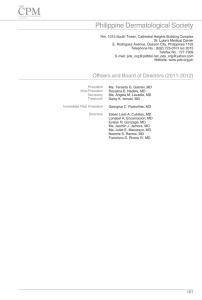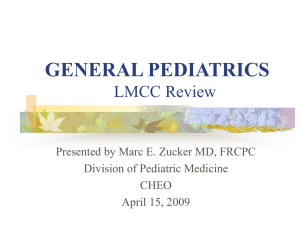CMEQuestionsText
advertisement
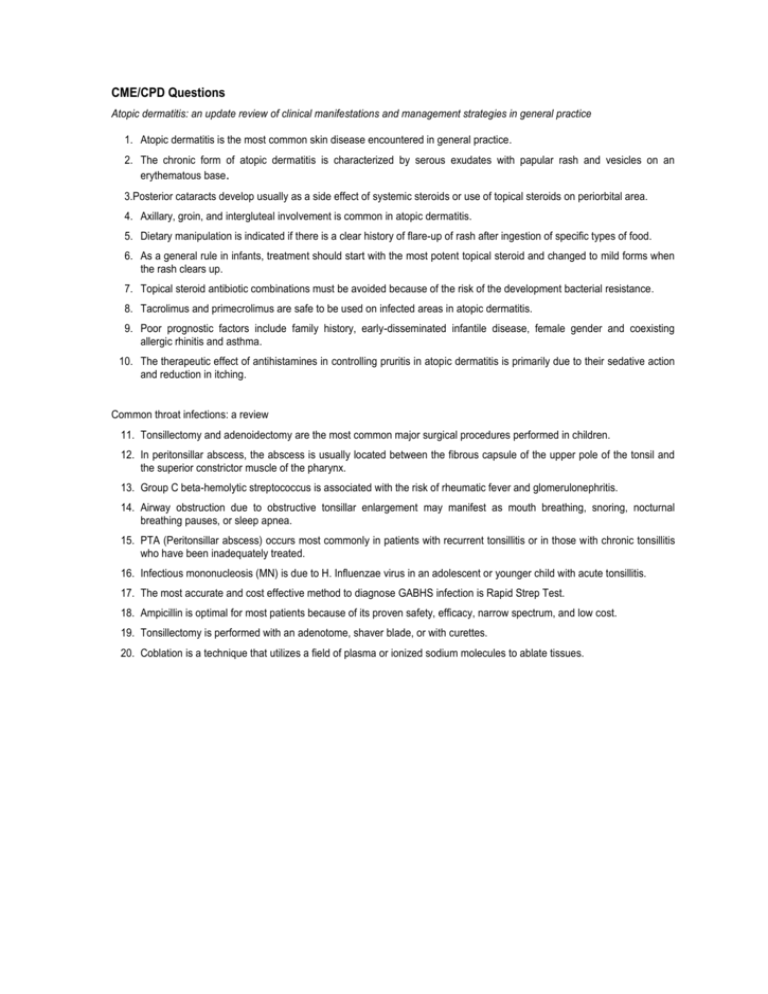
CME/CPD Questions Atopic dermatitis: an update review of clinical manifestations and management strategies in general practice 1. Atopic dermatitis is the most common skin disease encountered in general practice. 2. The chronic form of atopic dermatitis is characterized by serous exudates with papular rash and vesicles on an erythematous base. 3.Posterior cataracts develop usually as a side effect of systemic steroids or use of topical steroids on periorbital area. 4. Axillary, groin, and intergluteal involvement is common in atopic dermatitis. 5. Dietary manipulation is indicated if there is a clear history of flare-up of rash after ingestion of specific types of food. 6. As a general rule in infants, treatment should start with the most potent topical steroid and changed to mild forms when the rash clears up. 7. Topical steroid antibiotic combinations must be avoided because of the risk of the development bacterial resistance. 8. Tacrolimus and primecrolimus are safe to be used on infected areas in atopic dermatitis. 9. Poor prognostic factors include family history, early-disseminated infantile disease, female gender and coexisting allergic rhinitis and asthma. 10. The therapeutic effect of antihistamines in controlling pruritis in atopic dermatitis is primarily due to their sedative action and reduction in itching. Common throat infections: a review 11. Tonsillectomy and adenoidectomy are the most common major surgical procedures performed in children. 12. In peritonsillar abscess, the abscess is usually located between the fibrous capsule of the upper pole of the tonsil and the superior constrictor muscle of the pharynx. 13. Group C beta-hemolytic streptococcus is associated with the risk of rheumatic fever and glomerulonephritis. 14. Airway obstruction due to obstructive tonsillar enlargement may manifest as mouth breathing, snoring, nocturnal breathing pauses, or sleep apnea. 15. PTA (Peritonsillar abscess) occurs most commonly in patients with recurrent tonsillitis or in those with chronic tonsillitis who have been inadequately treated. 16. Infectious mononucleosis (MN) is due to H. Influenzae virus in an adolescent or younger child with acute tonsillitis. 17. The most accurate and cost effective method to diagnose GABHS infection is Rapid Strep Test. 18. Ampicillin is optimal for most patients because of its proven safety, efficacy, narrow spectrum, and low cost. 19. Tonsillectomy is performed with an adenotome, shaver blade, or with curettes. 20. Coblation is a technique that utilizes a field of plasma or ionized sodium molecules to ablate tissues.
